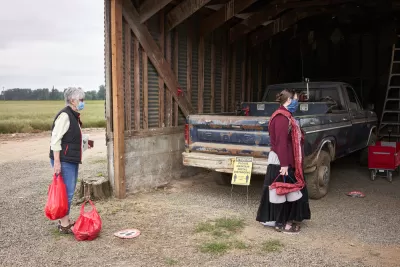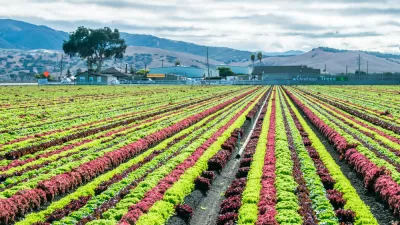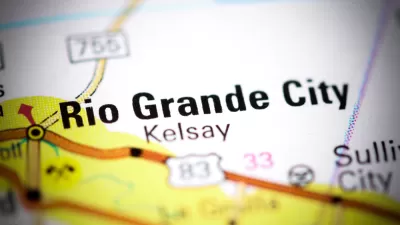As the coronavirus outbreak surges across the country, many rural communities are now seeing an unprecedented spike in infections and hospitalizations.

While most discussions about COVID-19 have focused on cities, many rural communities are actually experiencing increases in infections and hospitalizations. This is very concerning, especially since these areas typically lack the medical personnel and infrastructure to address outbreaks of diseases.
As Will Stone of NPR reports in the source article, "The pandemic's grip on rural America is especially alarming because many of these less populated areas rely on small hospitals, which don't have the beds or staff to absorb a crush of patients, especially those who require high levels of care." Small hospitals have had to transfer patients to major metropolitan areas where they can receive a higher level of care or when there are simply not enough staffed beds.
The surge in rural America is not consistent across the United States. For example, some communities got hit during the spring and summer when there were big outbreaks at food processing plants. The article indicates that rural counties in states like Kansas, Montana, South Dakota, and Nebraska now have some of the highest rates of infections per capita in the country. COVID-19 poses unique challenges for rural areas which tend to have an older population with higher rates of poverty and chronic disease than suburban and urban areas. Also, once the pandemic gets into rural communities, containing the spread can be especially challenging because they don't have the same public health resources and staff as more urban areas.
Planetizen Correspondent Irvin Dawid has also detailed the rural experience of the pandemic throughout the long months of surges and social distancing:
- North Dakota Physicians Plead for State and Local Leaders to Mandate Masks (October 21, 2020)
- Wisconsin in Crisis (October 11, 2020)
- The Changing Geography of the Pandemic (August 27, 2020)
- Pandemic's New Phase: Spreading to Rural and Urban Areas Alike (August 9, 2020)
- Will the Coronavirus Spare Rural America? (April 13, 2020)
FULL STORY: COVID-19 Surges In Rural Communities, Overwhelming Some Local Hospitals

Study: Maui’s Plan to Convert Vacation Rentals to Long-Term Housing Could Cause Nearly $1 Billion Economic Loss
The plan would reduce visitor accommodation by 25,% resulting in 1,900 jobs lost.

North Texas Transit Leaders Tout Benefits of TOD for Growing Region
At a summit focused on transit-oriented development, policymakers discussed how North Texas’ expanded light rail system can serve as a tool for economic growth.

Why Should We Subsidize Public Transportation?
Many public transit agencies face financial stress due to rising costs, declining fare revenue, and declining subsidies. Transit advocates must provide a strong business case for increasing public transit funding.

How to Make US Trains Faster
Changes to boarding platforms and a switch to electric trains could improve U.S. passenger rail service without the added cost of high-speed rail.

Columbia’s Revitalized ‘Loop’ Is a Hub for Local Entrepreneurs
A focus on small businesses is helping a commercial corridor in Columbia, Missouri thrive.

Invasive Insect Threatens Minnesota’s Ash Forests
The Emerald Ash Borer is a rapidly spreading invasive pest threatening Minnesota’s ash trees, and homeowners are encouraged to plant diverse replacement species, avoid moving ash firewood, and monitor for signs of infestation.
Urban Design for Planners 1: Software Tools
This six-course series explores essential urban design concepts using open source software and equips planners with the tools they need to participate fully in the urban design process.
Planning for Universal Design
Learn the tools for implementing Universal Design in planning regulations.
Ascent Environmental
Borough of Carlisle
Institute for Housing and Urban Development Studies (IHS)
City of Grandview
Harvard GSD Executive Education
Toledo-Lucas County Plan Commissions
Salt Lake City
NYU Wagner Graduate School of Public Service





























